Choosing a tripod mount for your smartphone reporting kit
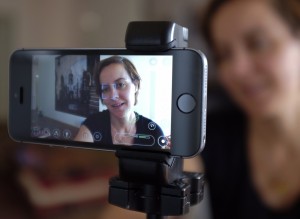 Unlike most cameras, smartphones do not have a threaded hole to connect a tripod. So, a tripod mount is an essential part of a smartphone reporting kit.
Unlike most cameras, smartphones do not have a threaded hole to connect a tripod. So, a tripod mount is an essential part of a smartphone reporting kit.
It will allow you to not only attach your smartphone to a tripod but to literally anything that has a standard 1/4 inch thread camera mount. For example, a monopod, pistol-style hand grip or a flexible camera support system such as a Gorillapod or Dinkum grip.
The benefits are clear. Using some sort of supporting device to stabilize the smartphone will produce better shots, especially when recording video interviews.
I’ve tried tripod mounts of different shapes and sizes to fit the various mobile phones I’ve used. Some were rubbish, while others only worked with specific mobile phone models and become redundant when you changed phone.
Fortunately there is a trend now for manufacturers to offer tripod mounts that will fit different types of smartphones.
The criteria I usually follow is straightforward. Is it easy to adjust; is it robust and does it work with my other equipment?
![]() read more
read more
Equipment: Mobile Journalist
Guy Degen is a freelance journalist and trainer and is always looking for innovative ways to use mobile devices for reporting.
Guy shares with us the equipment that make up his basic kit for using a mobile phone for reporting.
![]() read more
read more
Training mobile journalism – more than just apps (Part 2)
In the previous blog post on training mobile journalism, freelance trainer Guy Degen discussed smartphones and operating systems, useful free apps for training courses and managing installation of apps for trainees.
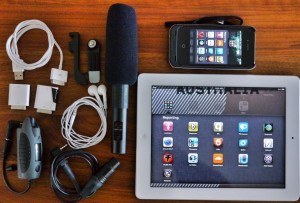 This blog post will look at some basic phone settings trainees should know, what to think about when developing a workflow for producing multimedia content with a mobile phone; editing and managing content produced by trainees in the field, tips for mobile journalism training assignments and some useful accessories for training.
This blog post will look at some basic phone settings trainees should know, what to think about when developing a workflow for producing multimedia content with a mobile phone; editing and managing content produced by trainees in the field, tips for mobile journalism training assignments and some useful accessories for training.
![]() read more
read more
Training mobile journalism – more than just apps (Part 1)
Using a mobile phone effectively for reporting is becoming more established in newsrooms.
And along with the ever increasing range of applications, journalism training and media development agencies are turning their attention to offering mobile journalism courses and mobile content producing courses for citizen media.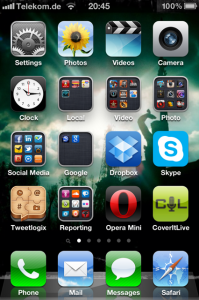
This is positive. But there are plenty of traps along the way in offering mojo training.
Here on the DW Akademie Africa blog, we’re always keen to explore multimedia apps and innovative ways journalists can use a mobile phone for their work.
In the first of two blog posts, we’ll take a look at some points journalism trainers should consider when setting out to develop mobile journalism courses.
![]() read more
read more
Ten useful apps for mobile reporting
Nowadays, most journalists carry mobile recording studios with them without even being aware of it. Almost every smartphone can be used for multimedia reporting – anything from short audio clip productions, taking pictures, recording video interviews, or even creating a blog with a combination of these elements.
Using a smartphone for mobile reporting has many advantages. The most obvious one is being able to capture and edit pictures, audios, and videos anytime because you’ve always got your phone with you. In addition, many smartphone apps and programmes now offer editing functions that are so good that the productions have studio quality.
When you’ve collected and edited your content, you can send or publish it immediately from your smartphone, as long as it has access to mobile networks and the internet.
Many journalists choose Apple’s iPhone
As far as smartphones are concerned, the iPhone is becoming more and more popular among mobile reporters, because new apps are being developed on a regular basis. That’s why we are going to present you ten of the most popular and effective apps for mobile journalism.
![]() read more
read more
Freedom Fone: dialing community media
As mobile phones become more sophisticated, it’s easy to overlook the simplicity, and yet the power, of the most basic type of handset that offers voice calls and text short message service (SMS) for communication.
It’s those basic services that Zimbabwe’s Kubatana Trust had in mind when they developed Freedom Fone to reach communities and audiences that do not have access to the Internet, and where literacy or language presents a barrier to gaining information.
From their website Freedom Fone is described as:
“…easy to build interactive, two way, phone based information services using interactive audio voice menus, voice messages, SMS and polls.”
Importantly, Freedom Fone is developed to be independent of the internet, both for the content provider and the end user.
Farmers in remote areas could for instance call an agriculture information service hosted on the Freedom Fone platform; navigate the interactive voice menu with the phone keypad (say, press 2 for market prices) and listen to the information they need. Or, radio stations could gather audio reports from listeners as voice mail messages or receive SMS answers – making another form of local community media available.
At the recent Global Media Forum in Bonn, Freedom Fone’s Co-Founder and Technical Director, Brenda Burrell, gave a couple presentations of the platform.
One audio example she played particularly stood out – so called “micro audio dramas”: broadcast as a series of short audio clips that people could call a service and listen to on their phone.
Freedom Fone micro drama example by DW Akademie – Africa
Burrell says educational micro dramas were among the most successful of the pilot projects using Freedom Fone.
For international media development agencies, innovative community media projects such as Freedom Fone, CGnet Swara in India, Voices of Africa and NT Mojos in Northern Australia, should also be good motivation to develop specific training programmes to produce audio and video content using mobile phones, or for “broadcast” via mobile phones.
PBS Media Shift’s Idea Lab has a good post profiling Freedom Fone and Mobile Active offers some very interesting insight on using Freedom Fone in the field with Farm Radio in Ghana and Tanzania.
From the Global Media Forum, have a listen to Brenda Burrell explaining more about the development of Freedom Fone, and you also can follow her on Audioboo.
Freedom Fone Brenda Burrell DW-GMF 2011 by DW Akademie – Africa
Author: Guy Degen
Using a mobile phone for reporting in Sierra Leone
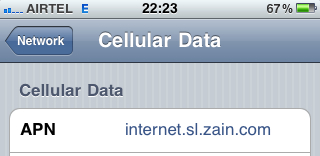 When it comes to mobile phones, working as a journalist in Germany means working in a fast internet 3G and wifi-wonderland. A mobile phone has long been an essential reporting tool for journalists, especially for broadcast media, but the increasing range of smartphones offer a lot more features for news gathering and reporting or "mobile journalism". A smartphone offers journalists a pocket-sized device to access the net and social media applications, a good camera for photographs as well as video and/or an audio recorder for producing radio reports.
When it comes to mobile phones, working as a journalist in Germany means working in a fast internet 3G and wifi-wonderland. A mobile phone has long been an essential reporting tool for journalists, especially for broadcast media, but the increasing range of smartphones offer a lot more features for news gathering and reporting or "mobile journalism". A smartphone offers journalists a pocket-sized device to access the net and social media applications, a good camera for photographs as well as video and/or an audio recorder for producing radio reports.
Wherever I travel, I'm always keen to test local networks and see how practical mobile phones might be for a mobile journalist or mojo – especially in Africa.
![]() read more
read more




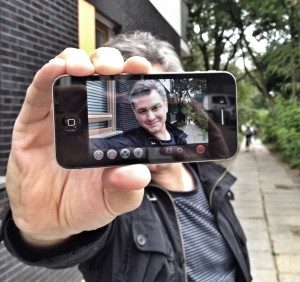

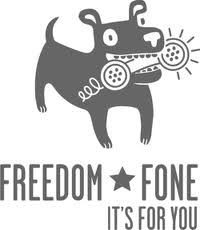
Feedback